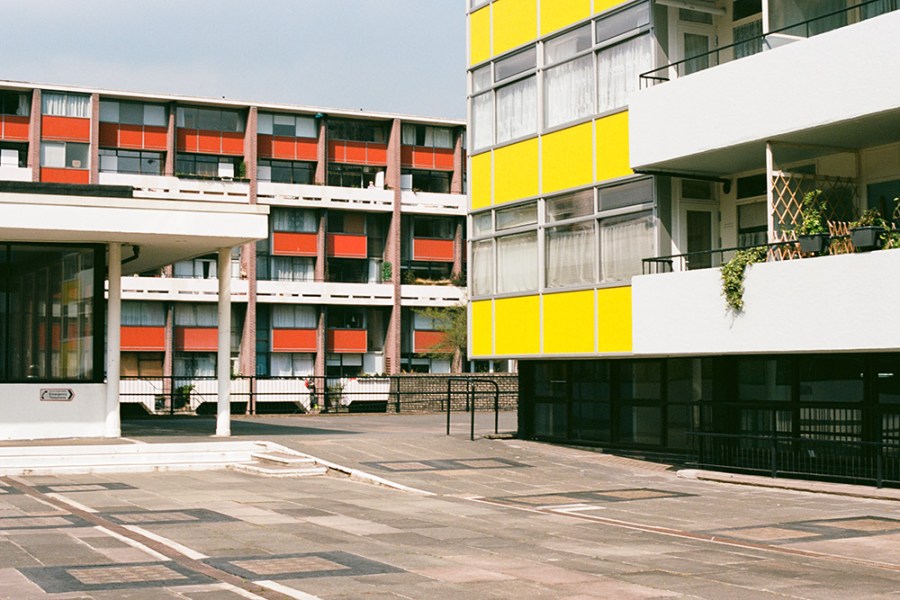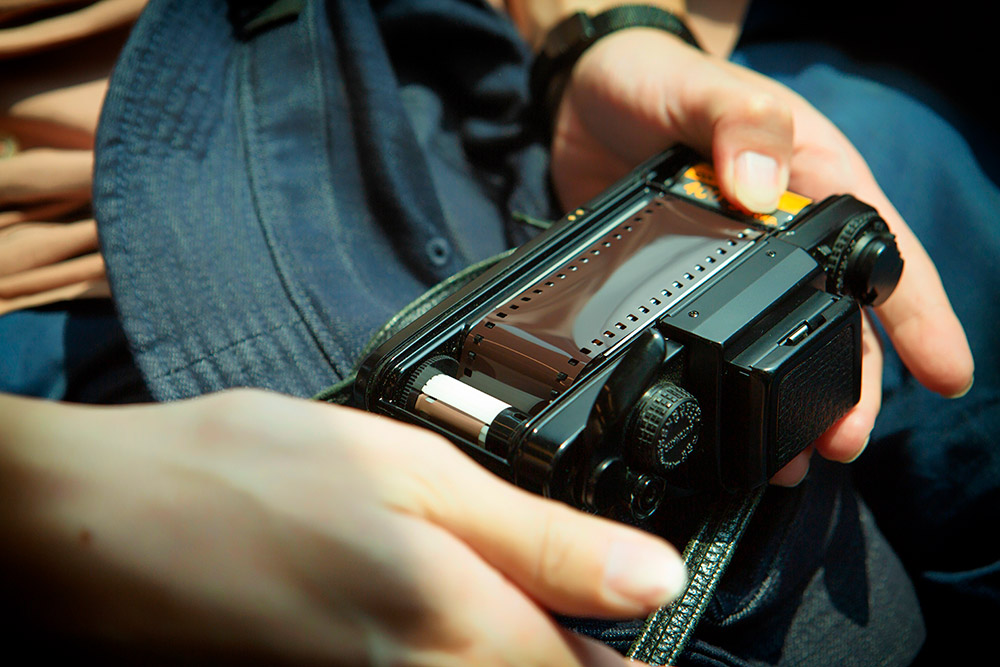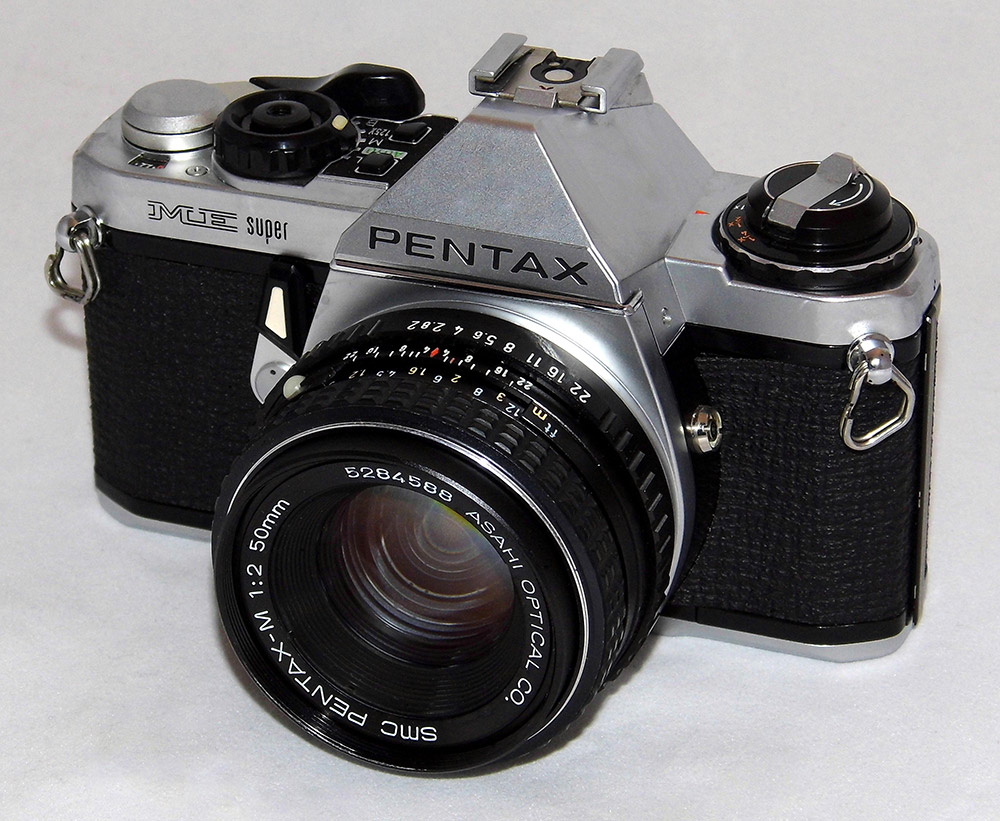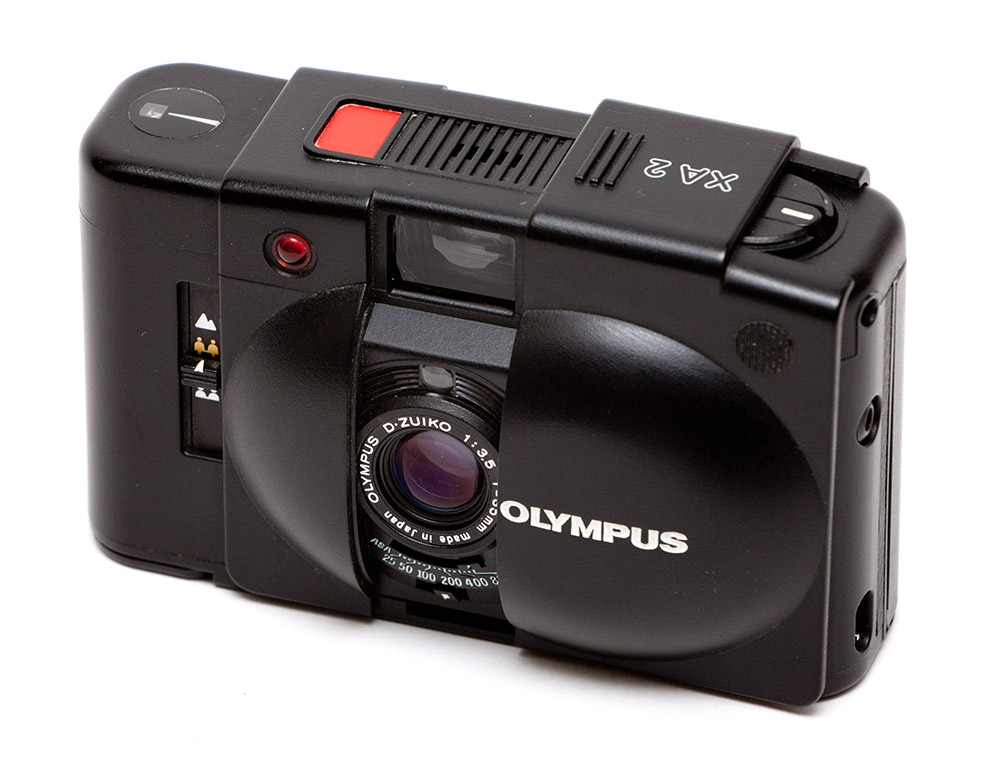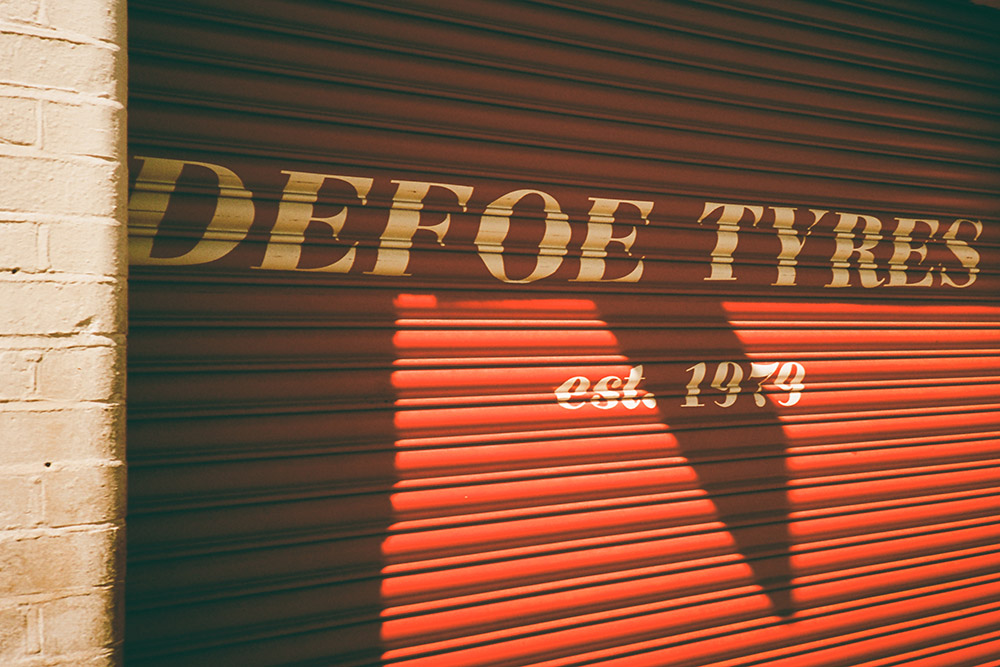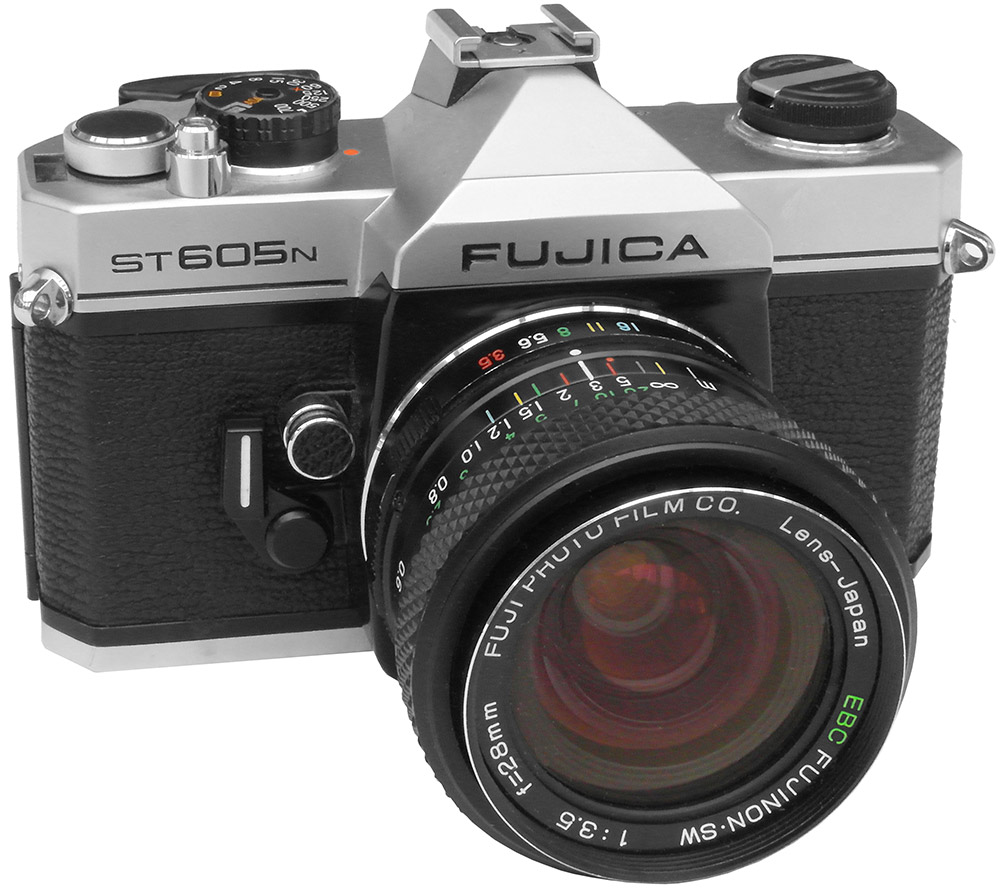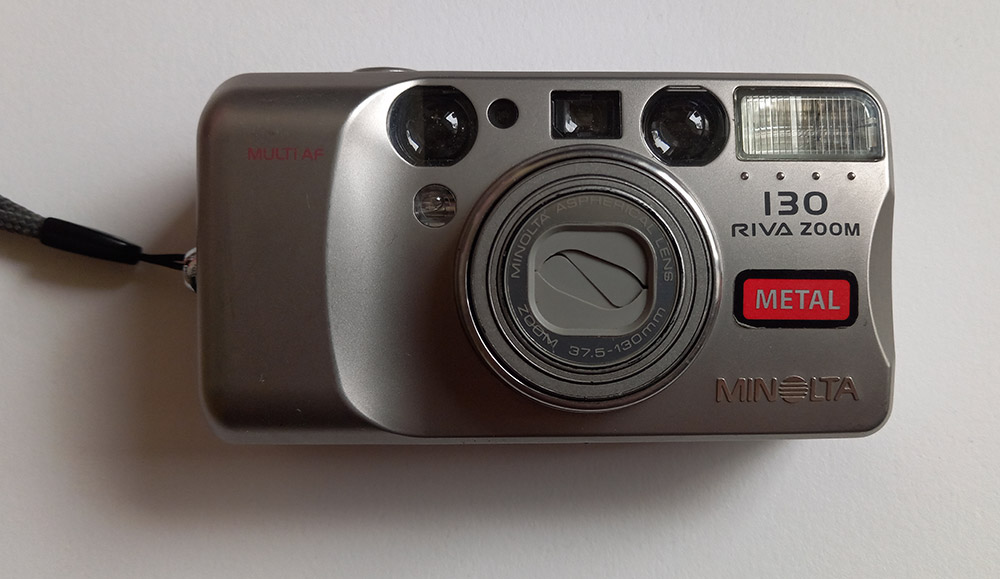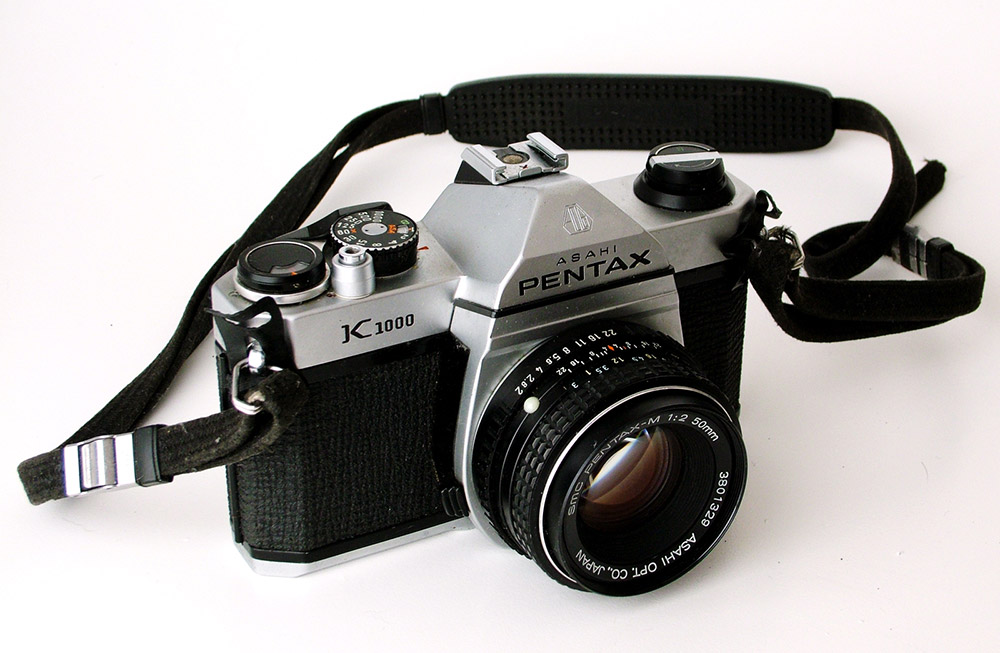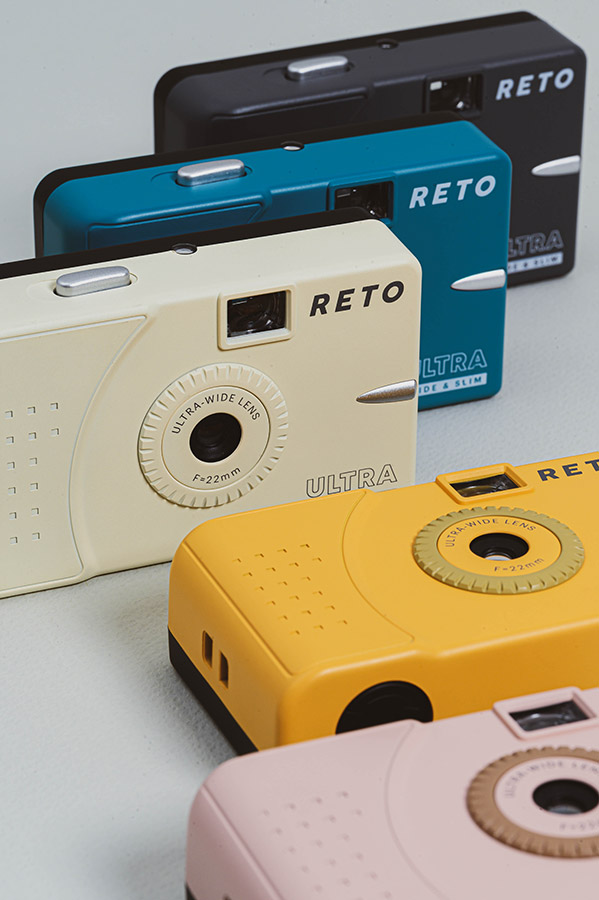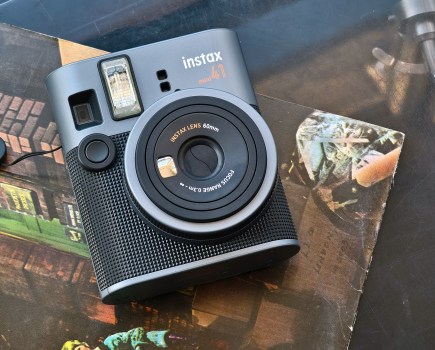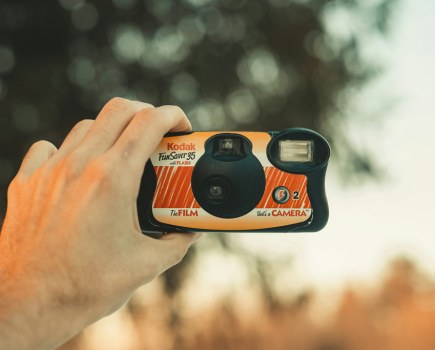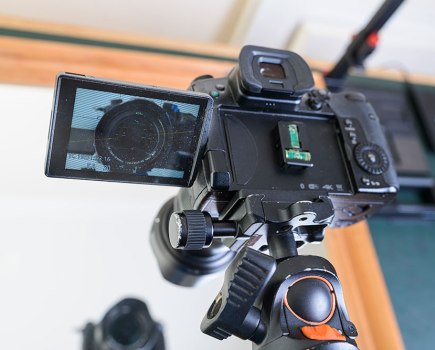Film prices are rising, but don’t let that stop you giving analogue photography a try (or rediscovering it). Jon Stapley reveals some of the best ways to do film photography on a budget, including bargain cameras and film stocks
We’ve given a lot of attention to the film photography revival in AP, but it’s a challenging time to shoot film. While most people in the UK have recently felt the pinch of an increased cost of living, film prices have been rising precipitously for a while now. Why is that? ‘It seems to be a simple case of demand outstripping supply,’ says Simon Skinner, co-founder and editor of photobite.uk, a website for photo and video enthusiasts, which also sells film.
‘My concern is that film manufacturers view the increased appetite for shooting film as a fad. That could mean a lack of investment in production to meet and maintain demand, which would keep prices high, and probably is.’
It’s colour film that is really ballooning in price. There are only a handful of companies keeping colour film in regular production, with Kodak being the biggest, and some stocks have pushed past £20 for a single roll of 36 shots!
Karen Freer, marketing manager at specialist retailer Analogue Wonderland, has seen first-hand the effect of steeply rising prices on the analogue photography community. ‘It makes me really sad that there are potentially a lot of people that just can’t afford to shoot colour film,’ she says. ‘We try to reduce the cost of film every month with different offers in our “deals on film” section, but there is only so much we can do.’
Film will always be a passion project – nobody loads a £20 roll of Ektar into a 40-year-old SLR because it’s the most convenient way to capture an image. They do it because they love it, and nobody should be excluded from their passion because of the cost. Fortunately it’s still possible to bag a bargain, whether cameras or film stocks, so read on…
Some of the best affordable 35mm film cameras
Canon EOS 500
If you’re coming from DSLRs and want a similar experience on film, you’ll be right at home with the Canon EOS 500. Film shooters don’t often get luxuries like phase-detection autofocus, but it’s present here, and it works pretty well – even if the EOS 500 sometimes has to hunt for a few seconds.
This was a budget camera even on release. So while the build is plasticky and doesn’t feel robust, you can pick one up for as little as £30 if you’re willing to search and don’t mind a few scuff marks. If there’s a lens bundled in, you can expect it to cost anywhere up to £100. Still not a bad deal.
And that’s the other big advantage of the EOS 500 – the Canon EF lens mount, which means that you can use it seamlessly with a Canon lens that rolled off the production line last week. If you get an EOS 500 or similar EOS SLR, you can easily grab a second-hand 50mm f/1.4 EF lens for a two-figure sum, and have a go-to film setup for low-light work.
- Online price: Around £30-100
- Lens mount: Canon EF
- Exposure modes: PASM
- Batteries: 2x CR123
- Weight: 370g body only
- Year of release: 1993
Best film SLR for beginners: Pentax ME Super
Slim and light considering this is a metal-bodied SLR, the ME Super boasts an idiot-proof exposure system, with a strip of LEDs lighting up in the viewfinder. When the lights turn green, your settings are correct. It is a wonderfully intuitive way to get a feel for correctly exposing a scene.
The downside, though, is that this system is also the ME Super’s most vulnerable point of failure. If something in your ME Super stops working, it’ll probably be this, and the cost of repair will probably be equal to or greater than the amount you paid for the camera.
Auto mode won’t produce usable results if the meter is broken, but there is a workaround – the unusual 1/125X mode on the dial fixes the shutter speed at 1/125sec, meaning you can use a lightmeter or metering app and just dial in the corresponding aperture.
We’d definitely recommend the ME Super, especially for less experienced film photographers. It’s easier to use than all-manual SLRs, and often can be picked up cheaper.
- Online price: Around £70-90 body only
- Lens mount: Pentax K
- Exposure modes: Auto, Manual, 1/125X, Bulb
- Batteries: 2x LR44
- Weight: 445g body only
- Year of release: 1979
Olympus XA2
There’s an argument to be made that every film photographer should carry a point-and-shoot. For those unmissable moments, for everyday documentation and simply for always having a 35mm camera on you, they’re invaluable. The Olympus XA2 is ideal, with a tiny body that fits in pockets and bags that even smaller SLRs like the Pentax ME Super simply can’t squeeze into. Unobtrusive and near-silent, it’s fantastic for street work.
The clamshell design of the XA2 keeps the lens protected, while also being ready to shoot at a moment’s notice. Slide it open, and you’re in business. You get three focus zones – 1m, 3m and infinity (it’ll default back to 3m every time you close it). The 35mm lens is a four-element M.Zuiko, which delivers impressive sharpness for something so tiny. Also, while there’s no hotshoe, the XA2 does have its own proprietary flash units that screw onto the side – the A11, and the larger A16. It’s often sold with one thrown in.
- Online price: Around £50-100
- Lens: 35mm f/3.5
- Exposure modes: Auto
- Batteries: 2x LR44 (1-2x AA for optional flash units)
- Weight: 200g (without flash)
- Year of release: 1980
Fujica ST605/ST605N
The Fujica ST605 and ST605N are near-identical versions of the same camera – a spartan battle-tank of an SLR from the 1970s. The main difference is that the N version has a shutter speed indicator alongside the exposure needle in the viewfinder, while the ST605 doesn’t. They tend to go for a similar price, so try to grab the ST605N. The ST605N’s shutter fires with a tremendously satisfying clunk.
It takes M42 screw-mount lenses, which gives you a lot of options and means you’ll probably have decent success second-hand lens-shopping. It does introduce a few quirks, though – the stop-down metering means the lens closes down to the set aperture when taking a reading. This means the viewfinder gets very dark when you’re shooting at smaller apertures – at f/16 or f/22, it can be a matter of point and pray.
There are a few such eccentricities with this camera – no one is sure why the shutter speed runs up to 1/700sec and not the more contemporaneously common 1/1000sec, for instance. Still, its fundamentals are solid, and lenses are cheap.
- Online price: £30-90 body-only
- Lens mount: M42
- Exposure modes: Manual
- Batteries: 2x LR44
- Weight: 570g body only
- Year of release: 1977/1978
Minolta Riva Zoom 130
When shopping for cheap cameras, don’t limit yourself to browsing online. Charity shops can be troves of unexpected gems – the Minolta Riva Zoom 130 is generally listed online for between £30 and £60, but when photographer Al Brydon picked one up, it cost him just 50p.
He used the Minolta Riva exclusively for his latest photobook, Even the Birds Were Afraid to Fly, published by Kozu Books.
‘The images are scuzzy, but that’s exactly why I used it,’ he tells us. ‘A point-and-shoot introduces the unpredictable and serendipitous nature of photography into my practice, which is so often governed by the quest for image quality.’
The hefty zoom on the Riva gives you real versatility, if you don’t mind quite a bit of whirring noise as it chugs in and out. It weighs about the same as an XA2, making it equally eligible to be your take-everywhere film camera. ‘I personally enjoy being surprised by what I can learn by simplifying my approach,’ Al says. ‘I find a point-and-shoot helps me remember why I love photography.’
- Online price: Around £30-60
- Lens: 38-130mm f/5.4-10.5
- Exposure modes: Auto
- Batteries: 1x CR123A
- Weight: 210g
- Year of release: 2002
Best value film SLR: Minolta Dynax 7000i
This plastic-fantastic budget choice was the most successful early iteration of Minolta’s AF film SLRs, coming out in 1988. The AF performance was a significant step-up from its predecessor, with the 7000i offering three AF sensors, including wide-focus and centre focus. There are lots of accessories too.
While the AF system is basic by today’s standards, with the inevitable hunting in low light, it still locks on surprisingly quickly and accurately in decent shooting conditions. The Dynax is very user-friendly, with a super-efficient automated film transport, as well as PASM shooting modes, TTL flash and a maximum shutter speed of 1/4000sec.
The metering is reliable, too, and there are some handy extras, including a button shortcut for P mode – useful if you need a grab shot and don’t have time to change settings. While the body is entirely plastic, it’s tough plastic, and the camera handles well.
You can also use a wide range of Minolta A-mount lenses, many of which are optically excellent for their age, and can be mounted on compatible Sony digital cameras. This is not a very ‘trendy’ looking SLR, so you can easily find a nice example under £50, often with a flashgun and lenses too. If the electrics go, however, you’re stuffed.
- Online price: Around £15-50 body only
- Lens mount: Minolta A-mount
- Exposure modes: PASM
- Batteries: 1x 2CR5
- Weight: 620g
- Year of release: 1988
Classic Film SLR – Pentax K1000
The Pentax K1000 is one of the most famous workhorse cameras of the 1970s. Fully manual in operation, with an in-viewfinder metering system, it was a bit no-frills even back then, lacking certain features such as a self-timer. But time has been kind to the K1000, and it has garnered a reputation as a camera that just keeps on going, Terminator-style.
The internal meter can be a bit sluggish to respond, and just as with the ME Super, this is the feature most likely to develop a fault. Many K1000 owners find buying a lightmeter to be a preferable alternative to getting the camera repaired, and the fact that the K1000 only shoots in manual mode means an issue with the meter won’t affect anything else.
A victim of its own success, the K1000’s popularity means it can go for a slightly higher price than comparable cameras from the same era. However, if you are patient and eagle-eyed, you can find it bundled with a 50mm Pentax SMC lens for around £100. That combination has well and truly stood the test of time.
The K1000 is also another great option for beginners, many photography courses use this camera as an introduction to 35mm film photography.
- Online price: Around £80-120 body-only
- Lens mount: Pentax K
- Exposure modes: Manual
- Batteries: 1x LR44
- Weight: 620g
- Year of release: 1976
Best contemporary film camera: Reto Ultra Wide and Slim
Budget film photography doesn’t just mean hunting in bargain bins for cameras released several decades ago. There are more contemporary options available, like the Reto Ultra Wide and Slim, a cheap point-and-shoot that comes in five different colours and weighs an incredibly minimal 68g.
Karen Freer from Analogue Wonderland recommends the Reto as an excellent starting point for budget film photographers. ‘I have the yellow one and a lot of people in the community have found it a joy to take out with them,’ she says. ‘It’s so tiny it fits in your pocket, and works best with 24-exposure films. The lens is pretty good, considering it’s a plastic camera, and it also has a very wide view,
so you can fit a lot in one frame.’
The 22mm lens gives a wider perspective than you’d normally get from a disposable or point-and-shoot camera, which tend to have 35mm optics or thereabouts. The incredibly light build does mean the camera feels a little plasticky, but that’s an unavoidable trade-off if you want a camera that weighs about the same as three AA batteries.
- Online price: £34
- Lens: 22mm f/11
- Exposure modes: Auto
- Batteries: None
- Weight: 68g
- Year of release: 2022
You can view more great 35mm camera options here: Best 35mm film cameras, and check out our guide to the best disposable film cameras for a quick, cheap option.
Budget film options – Here are some of the cheapest ways to shoot film
One of the most enjoyable aspects of film photography is trying different stocks. There are still plenty of budget options for film out there – here are four we particularly recommend
Kentmere Pan 400
Average price per roll: £4
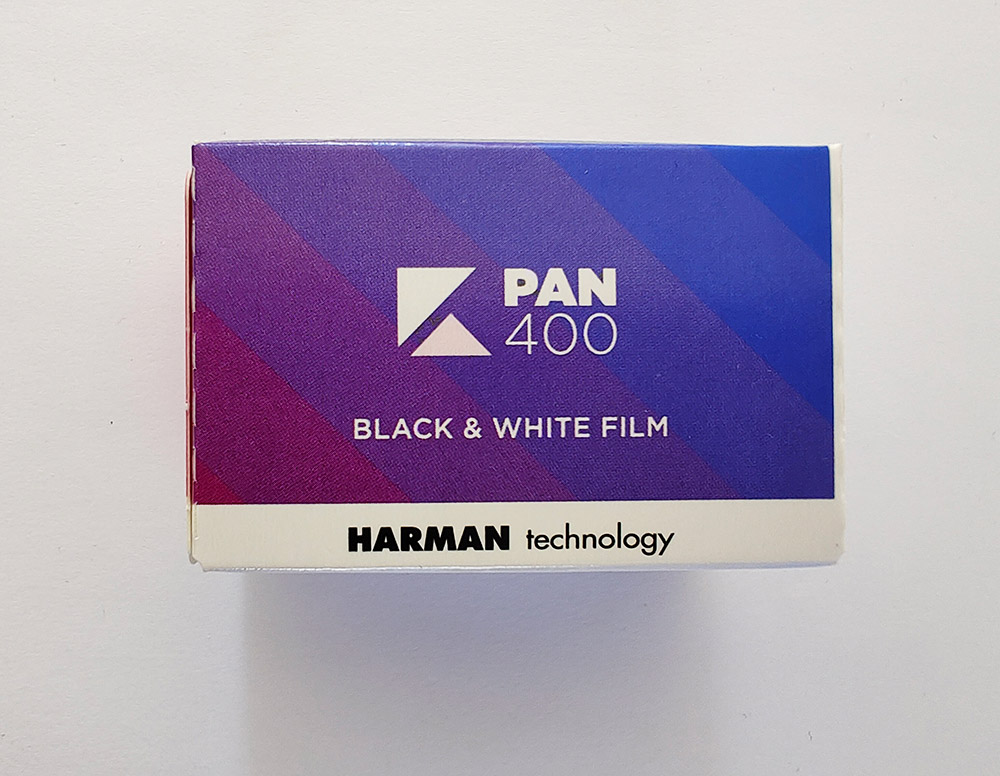
Kentmere is consistently the cheapest mainstream film you can buy right now, at £4 for a roll of 24 frames. This monochrome stock is a great beginner’s choice, and is made by black & white specialists Ilford, so you can be assured of quality results.
This film has quite pronounced grain, meaning you don’t get the strong lines and contrast of more expensive b&w stocks, but it is very forgiving exposure-wise, with plenty of detail in shadows and highlights. While there’s also an ISO 100 version, the 400 is a more forgiving and versatile choice that encourages experimentation and knockabout fun.
Kodak ColorPlus 200
Average price per roll: £6-10
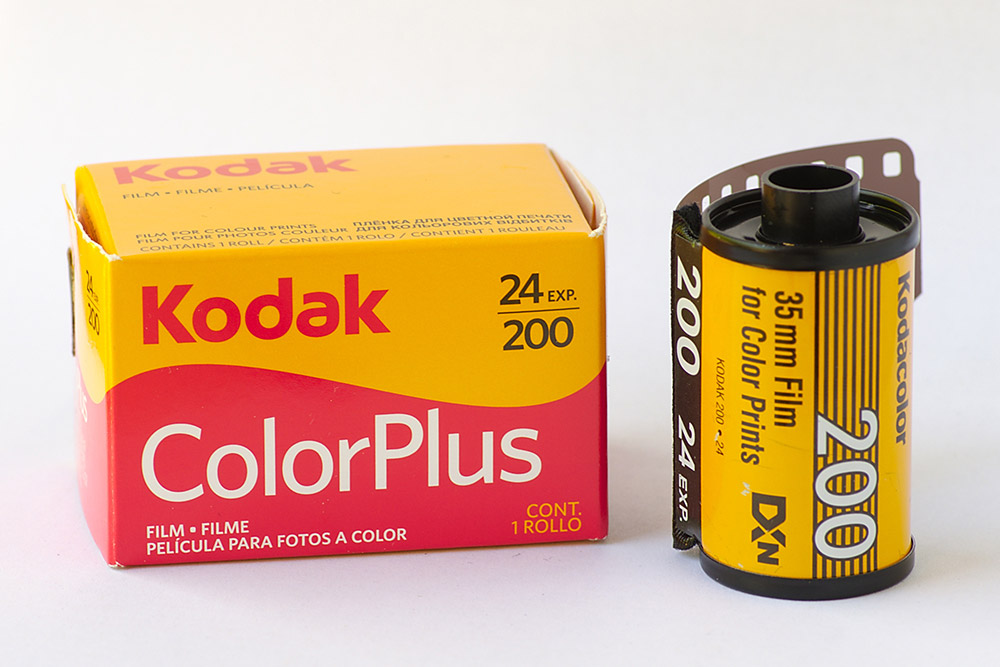
As Kodak prices continue to rise, ColorPlus is now the closest thing to a budget film that it has on the books. Stock has been increasingly rare. ‘When we have ColorPlus in stock, it sells out in hours!’ notes Karen Freer of Analogue Wonderland. It’s soft and nicely muted – not as poppy as Kodak’s popular Ultramax 400 stock, delivering more of a classic look (you can pick up Ultramax for a reasonable £9 a roll).
The more light you can give ColorPlus, the better, as it’s only ISO 200 and is less tolerant to being underexposed than pricier films. ColorPlus can pass the £10 mark from opportunistic sellers on eBay and Amazon Marketplace, so shop around and be patient.
Ilford XP2 Super 400
Average price per roll: £6-8
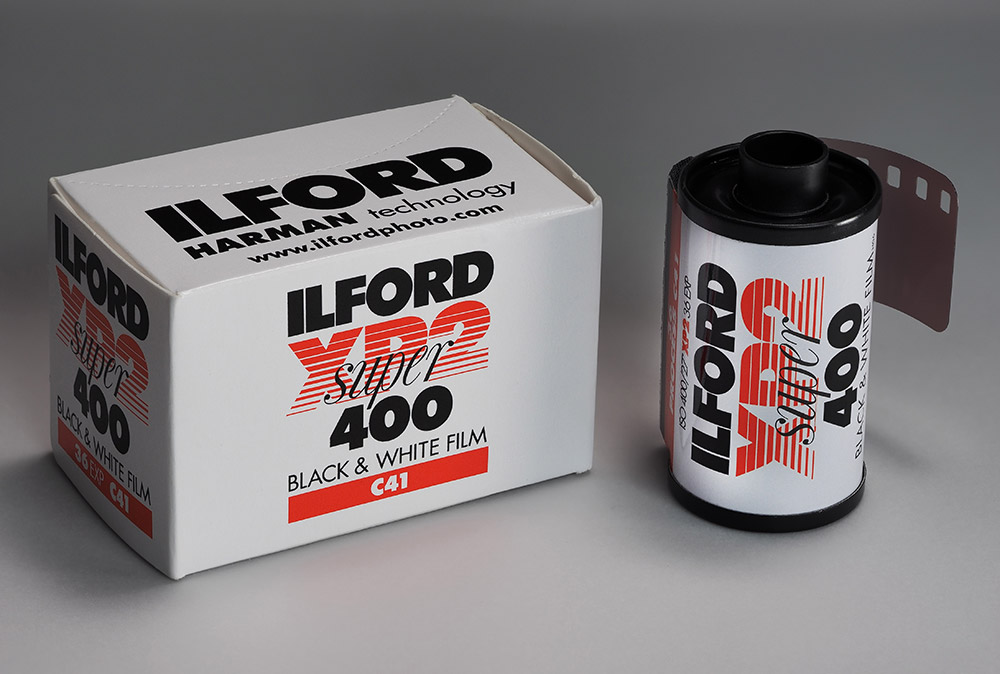
The colour/b&w dilemma for budget film photographers is made all the more tricky by the fact that b&w film is cheaper to buy, but more expensive (and time-consuming) to develop. Ilford’s clever XP2 Super 400 is a black & white film that can be developed using the standard C41 colour process. Your local Boots can develop this stock, no problem.
Of course, that wouldn’t matter if the results didn’t deliver, but XP2 is excellent – a favourite among many photographers. It doesn’t have the high-contrast drama of other b&w films from the likes of Rollei, but its ISO rating of 400 makes it highly versatile, and it’s also very tolerant to being over- or under-exposed.
AgfaFoto APX 400
Average price per roll: £6
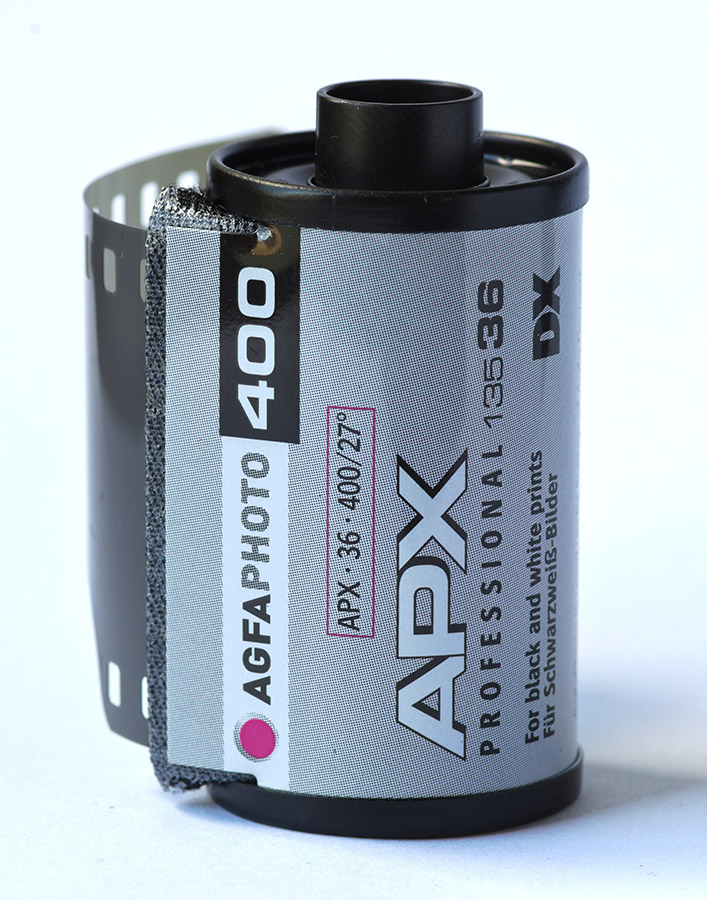
AgfaFoto APX is a good budget alternative to Ilford’s perennially popular black & white HP5 400 stock. It’s especially good for retaining highlights, so it’s worth remembering to meter for the shadows and not worry too much about overexposing.
The folks at the Analogue WonderLab also say that it can be pushed in developing as high as ISO 1600 – which means you can shoot it with the camera set to a much higher ISO than the box speed, and still get great results. This makes it very usable in low light, as long as you make a note of the speed at which you shot it. A great choice.
Read our guide to buying the best film and what you need to know.
Good value film development laboratories
It may seem as if you could save by developing film yourself, but the time and space required, not to mention rising costs of chemicals, mean this is far from a sure thing. ‘Home development is likely more of a passion than a way to save,’ says Simon Skinner from Photobite. ‘There are some great labs out there, offering great prices to develop your film, so unless you’re a complete purist, this is likely the better bet.’
There’s a wide choice of places to get your film developed but here are three of our favourites…
Analogue Wonderland
£9.50 per roll C41 dev/scan (medium-resolution JPEG) l analoguewonderland.co.uk
Since getting its WonderLab off the ground last year, Analogue Wonderland has been developing up a storm. The development time targets are 2-3 working days, and there’s a lot of fun community interaction, with regular photo competitions and livestreams on YouTube. Also, in a savvy bit of marketing, it’s started including paid postage labels to the WonderLab in the boxes it uses to send out film orders, saving you some cash at the Post Office.
Photo Hippo
£6.50 per roll C41 dev/scan (medium-resolution JPEG) l photofilmprocessing.co.uk
The Photo Hippo website may look like it fell out of a time portal from 2007, but this is a great developing and scanning service, with cheap prices, fast turnaround times (the target is 1-2 working days) and discounts on bulk orders. It’s a Fujifilm specialist, and one of the relatively few labs that does E6 processing, meaning it’s a good choice if you’ve got some recently shot slide film like Fuji Velvia burning a hole in your drawer.
The Film Safe
£9 per roll C41 dev/scan (medium-resolution JPEG) l thefilmsafe.co.uk
Another reliable developing and scanning service that specialises in fast turnarounds (colour C41 rolls generally take 3-4 working days from receipt; b&w tends to be 4-5). Scans can be received in a range of resolutions, and there’s the option of TIFF format if you want to make large prints.
You can also see our guide to the best black and white film printing services here.
Want to learn more about film scanning?
See some of Dan Rubin’s tips for film photography and scanning here.

